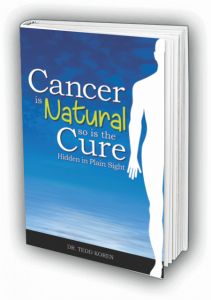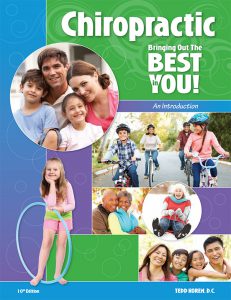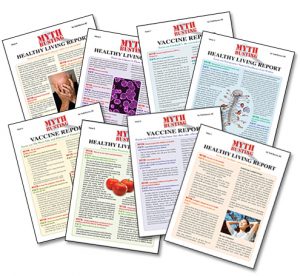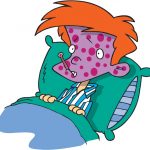PTSD: a plethora of symptoms
Flashbacks, being haunted by uncomfortable dreams and thoughts, a racing heart, tightness in the chest, mood swings—these are only some of the symptoms of post-traumatic stress disorder or PTSD.
As the name implies, PTSD develops after someone has experienced a trauma be it physical, sexual or emotional assault that filled them with fear, helplessness or horror.
Common causes are the unexpected death of a loved one, an accident, war or a natural disaster.
Other symptoms of PTSD
In addition to the above, PTSD symptoms may include being easily startled, feeling “on edge,” having difficulty concentrating, having difficulty sleeping and having angry outbursts.
 If the victim is age six or younger symptoms may include bedwetting, forgetting how to or being unable to talk, acting out the scary event during playtime, being unusually clingy with a parent or other adult.
If the victim is age six or younger symptoms may include bedwetting, forgetting how to or being unable to talk, acting out the scary event during playtime, being unusually clingy with a parent or other adult.
The sufferer may not even clearly remember the event, but the effects of the experience persist—it’s still manifesting as symptoms months or years later. The symptoms may be so severe that they spill into day-to-day life affecting relationships and work. Under such intense stress, the PTSD sufferer may retreat into a world of guilt and blame and lose interest in life.
War
 PTSD has been known to exist for a long time; it is most dramatically exhibited by soldiers who experience the trauma of war. It has gone by many names: in World War I it was called shell shock, in World War II battle fatigue or battle exhaustion. Other terms for PTSD are war neurosis, combat stress reaction and combat fatigue.
PTSD has been known to exist for a long time; it is most dramatically exhibited by soldiers who experience the trauma of war. It has gone by many names: in World War I it was called shell shock, in World War II battle fatigue or battle exhaustion. Other terms for PTSD are war neurosis, combat stress reaction and combat fatigue.
It doesn’t go away
Nearly everyone has had a fearful, terrifying and life-threatening situation, a powerful “fight-or-flight” response affecting the entire person—hormones, brain signals, organ function, body structure and emotions. In spite of the enormity of the effect, most people appear to recover without any lingering symptoms. But that is not the case with those suffering from PTSD.
PTSD sufferers may live with the stress of a trauma for years without resolution or diminution. Years may have gone by, the war may be over, broken bones have reconnected, tissues have healed, and everyone has returned to safety. But the trauma remains.
How common is PTSD?
 PTSD is not rare. It is estimated that millions of people, as many as 3.6% of adult Americans, suffer from this condition every year with twice as many experiencing it in their lives. Statistically, women are more likely to develop PTSD than are men probably due to domestic violence, abuse and rape.
PTSD is not rare. It is estimated that millions of people, as many as 3.6% of adult Americans, suffer from this condition every year with twice as many experiencing it in their lives. Statistically, women are more likely to develop PTSD than are men probably due to domestic violence, abuse and rape.
The medical approach
Common medical approaches to treating PTSD include psychotherapy to develop ways of coping, medications (for depression and anxiety) or both.
A promising approach is known as prolonged exposure therapy wherein the person re-lives the traumatic experience or is exposed to objects or situations that cause anxiety in a safe environment. This desensitization therapy helps the person gradually become more comfortable to “take the edge” off the fear and anxiety.
A natural approach to helping PTSD
 One way of understanding the mechanism of PTSD is picturing “toxic tape loops” or repetitive programs in the brain. That is, the brain, spinal cord and other parts of the nervous system and body continuously re-experience the physical injury and emotional fear, shock, and emotions of the event—24/7. The experience is trapped in the body and the sufferer continues to live in a prison of neuro-emotional stress.
One way of understanding the mechanism of PTSD is picturing “toxic tape loops” or repetitive programs in the brain. That is, the brain, spinal cord and other parts of the nervous system and body continuously re-experience the physical injury and emotional fear, shock, and emotions of the event—24/7. The experience is trapped in the body and the sufferer continues to live in a prison of neuro-emotional stress.
This may occur consciously or unconsciously.
These pathological neural pathways or toxic tape loops are akin to programs that lock up our neural computers. We need to introduce a “reboot” or pattern interrupt to free the sufferer from these unending and uncontrollable reactions. How can we do it?
Using the POS to address PTSD
We can do a pattern interrupt with KST using the POS—the posture of stress or posture of subluxation. Practitioners of Koren Specific Technique (KST) locate and interrupt these toxic loops. What is the POS?
The POS is a little-known physiological phenomenon: subluxations (aka stress/pain/blockages/dysfunction) are posture specific. That means that some subluxations will only reveal themselves when the patient is in a certain posture—either a physical or emotional posture. In other words, as we change our physical or emotional posture, subluxations come and go.
 For example, a patient was hurt in a car accident. That patient’s subluxations/stress will reveal themselves in the posture they were hurt in: sitting and driving. When the patient sits (and holds an imaginary steering wheel) analysis in that posture will reveal more subluxations/stress than if they were checked while laying down.
For example, a patient was hurt in a car accident. That patient’s subluxations/stress will reveal themselves in the posture they were hurt in: sitting and driving. When the patient sits (and holds an imaginary steering wheel) analysis in that posture will reveal more subluxations/stress than if they were checked while laying down.
Patient care is best done when the patient is in the posture that reveals the subluxation or stress, that is, the POS.
How do we do this?
Patient: “Doctor, it hurts when I do that.”
Doctor: “Don’t do that.”
Henny Youngman’s little joke notwithstanding, to get rid of PTSD we want patients to “do that.” In other words, to put themselves in the physical and even the emotional POS, posture of stress/pain/subluxation, etc., associated with the trauma they experienced.
For example, the POS for someone with PTSD may be a combination of reliving the physical AND the emotional experience. The more specific the POS, the better the correction. The POS of a person with PTSD may be as individual as the trauma.
However, just addressing the physical stress may be enough to release a lot of PTSD. Many emotional stresses appear to be locked in the body and the physical stresses can cause emotional stress.
What if it’s too painful?
If it’s too painful for the patient to actually relive the event in the first person, have them watch the event as an observer as if they were watching a movie. That gives a little distance (and safety).
Correct while the patient is in the POS
As physical posture changes subluxations (stress/imbalance/dysfunction/blockage, etc.) that we may have not seen before will surface.
Additionally, as emotional posture changes (as we experience different emotions) subluxations, etc. we may have not seen before will surface.
The goal to addressing PTSD is to correct the subluxations/stress in the specific posture. The physical subluxations reveal an opening to deeper stresses.
Does it work?
When patients are placed in the physical and emotional POS and the subluxations that surface are corrected by KST practitioners the following stories (among others) are reported:
PTSD in a Vietnam Vet
A Vietnam vet who was a helicopter pilot came in for lower back pain. KST analysis revealed emotional stress. One of the emotions that came up was anger; it was cleared by adjusting sphenoids, then fear came up. That’s when he told me he was in Vietnam and had been diagnosed with PTSD. He reported more improvement in just one session of Koren Specific Technique than in years of therapy!
Update: I continue to work with him. He has reconciled with an estranged son—and can at least carry on a conversation with his ex-wife. He mentioned this work to his therapist.
I continue to check him periodically. Emotions now rarely come up and if they do they are fairly minor. He recently returned from a reunion of Vietnam Vets of the outfit he was in. He had not been able to attend prior reunions because of fear that he wouldn’t be able to handle it but he said this one was just fine!
Brian Menzies, DC, Fairmont, West Virginia
More examples:
PTSD: intrusive memories, bad sleep
 A thirty-year-old patient with severe post-traumatic stress disorder resulting from action in the Iraq war came in for care. He had over 100 intrusive memories that were coming at him all the time, keeping him from sleeping and causing pain all over.
A thirty-year-old patient with severe post-traumatic stress disorder resulting from action in the Iraq war came in for care. He had over 100 intrusive memories that were coming at him all the time, keeping him from sleeping and causing pain all over.
I instructed him to make a list of the 5-6 worst memories and attach a number to them. Then I used KST analysis to prioritize which one to do first, second, third, etc.
I had him run it like a movie and while he was doing that I adjusted him until he was clear (you will know it is clear because the patient will tell you that the memory goes from vivid with intense feeling to very dull, no feelings and many time goes from color to black and white). We did this with his other memories.
Since that day, he has never suffered again from those intrusive memories and he sleeps like a baby.
Update: It’s been three years and the PTSD correction is still holding. I have found in my practice that past traumatic events are very easy to clear using the above method. For me, it has worked 100% of the time.
David Shores, DC, Encinitas, California
More examples:
PTSD from childhood
A female patient with PTSD. For 5 years she had severe pain in her upper right arm, chronic headaches, vertigo (dizziness), severe TMJ and inability to lay prone.
Progress was initially slow but after 15 visits she can now be adjusted without startle reflex and gasping for breath. She was able to lay prone for short periods during her last 2 visits and even cried for the first time. Crying was not permitted in her home.
She also allowed me to give her a half-strength hug after her last visit that she can normally not tolerate due to pain and panic. She and her husband are very excited about her progress and they feel they are finally on the right track.
Dan Secrest, DC, Scottsdale, Arizona
Impotent: caught wife cheating 
A 30-year-old man reported complete impotency for the prior two years since he caught his wife in bed with another man. He had used drugs, acupuncture, chiropractic, psychotherapy—with no lasting results.
As he re-lived the event, subluxations appeared in his cranium, cervical spine and sacrum. He was asked to think about his (subsequent) divorce and the emotions that accompanied it.
The next day he reported complete resolution of his symptoms. “I’m back to my old self, thank you,” he said.
Tedd Koren DC, Gwynedd Valley, Pennsylvania
And one more:
Land mine in a Hummer
An ex-military man is on permanent disability after his Hummer drove over a land mine. Of the five men in the vehicle, only he and one other survived the blast.
He came into my office after a motor vehicle accident, where he was the passenger (just like he was in the land mine incident). He was an emotional mess, to say the least.
After some care he had the confidence to drive himself to the office, he no longer wakes up at night from nightmares, his headaches, lack of energy and pains disappeared.
Our office staff noticed that his social interaction increased whereas before would talk to no one, barely even me.
Brian Menzies, DC, Fairmont, West Virginia
Use POS with KST
KST permits people to be easily analyzed and corrected in the POS. The phenomenon of POS can be used to address and help people suffering from a multitude of physical, emotional and physiological (i.e. allergies, dyslexia) complaints.
Using the POS KST practitioners locate and correct subluxations, etc. that other practitioners are often unable to locate.
Please scroll down below to leave me a comment.
And please share this far and wide – patients, colleagues, friends & family!
The buttons are on the right.=====>

Dr. Tedd Koren
Dr. Koren, originally from Brooklyn, NY, lives in Montgomery County, PA. A graduate of the U of Miami and Sherman College of Chiropractic, he writes, lectures and teaches in the US, Europe and Australia as well as takes care of patients and fights for healthcare freedom. Dr. Koren and his wife Beth have two children.











Hi Tedd
We have adjusted many people with ptsd using KST. Sometimes the pos is too painful or stressful so it is useful to ask the body if it can show you what needs to be done, clear what comes up however many cycles of adjustment that takes and the get the Pt to put themselves into the pos. This seems to reduce the trauma of revisiting the event/events that caused the ptsd. We have seen quite a few with this problem, including past life traumas.
Interesting. On the West Coast? Is this covered by insurance?
Thanks,
J
Most insurances cover KST done by a chiropractor or other healer who works with insurance companies.
Saw the text. Did you get something in reply?
got it .. i will remove this test post